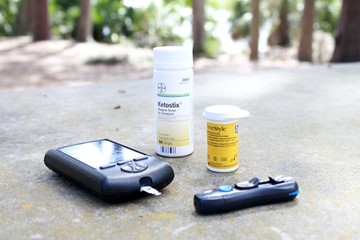
Too many people see prediabetes as a steppingstone to type 2 diabetes. But this shouldn’t be the case. Instead, individuals should see it as a motivator to lower their risk factors and retain a diabetes-free life.
While it’s easier said than done, Dr. John Heary says that making critical lifestyle changes is the key to avoiding the onset of type 2 diabetes. Everything from drinking more water to increasing exercise to losing fat allow people (whether they’ve received a prediabetes diagnosis or not) to live a healthy, happy life for years to come.
Losing Extra Weight (and Keeping it Off)
Extra weight greatly increases the risk of developing type 2 diabetes. Visceral fat (i.e., excess weight around abdominal organs), in particular, is associated with inflammation, insulin resistance, prediabetes, and type 2 diabetes.
Thankfully, studies show that losing just 5% to 7% of weight can lower the diabetes risk in those who are overweight, obese, or have prediabetes. Greater weight loss, however, leads to increased benefits.
Individuals should speak to their doctor about setting realistic bodyweight targets and timeframes, ensuring they lose fat safely and effectively. Practitioners can also advise on the best ways to keep the weight — i.e., continuing these newfound lifestyle changes forever.
Increasing Physical Activity
Regular exercise helps people lose weight, decrease blood sugar, and enhances sensitivity to insulin, which regulates blood sugar levels. The more active you are, the less likely you’ll experience type 2 diabetes.
Generally speaking, adults should aim for at least 30 minutes of moderate to vigorous aerobic exercise on most days, totaling 150 minutes per week. For resistance training, two to three times a week is enough.
At the end of the day, it’s all about limiting the time spent inactive (like sitting at a computer or watching television).
Consuming Plant-Based Foods
Plant-based foods offer untapped access to minerals, vitamins, phytochemicals and carbohydrates — all of which are important for a healthy, balanced diet.
Carbohydrates include sugar, starches, and fiber. The former two provide energy, while the latter isn’t digested/absorbed by the body. And it’s the fiber-rich foods below that lower the risk of diabetes and aid weight loss by slowing sugar absorption, decreasing blood glucose, managing heart health, and interrupting the absorption of fat and cholesterol:
- Legumes (beans, lentils, chickpeas)
- Fruits (peppers, tomatoes, apples, oranges, etc.)
- Leafy greens (kale, spinach)
- Broccoli
- Cauliflower

Drinking More Water
Many beverages come with high sugar contents, so sticking to water is ideal for preventing type 2 diabetes. The sugar found in sweetened fruit juices and soda has been linked to two varieties of diabetes in adults — type 2 and latent autoimmune diabetes (LADA).
One study of 2,800 participants discovered that those who drank upwards of two sugary beverage servings every day had a 20% increased risk of type 2 diabetes, and 99% increased risk of LADA. Therefore, individuals should increase water intake and cut down on sodas.
In Summary
All patients hold the power to prevent type 2 diabetes. It lies within our grasp through the implementation of lifestyle changes. By embracing healthy habits and making conscious choices, we have the ability to significantly reduce the risk of developing this chronic condition.
Through regular physical activity, maintaining a balanced diet, managing stress levels, and prioritizing quality sleep, we can create a foundation for long-term health and well-being. Remember, the steps we take today to prioritize our health can pave the way for a vibrant and diabetes-free future.



